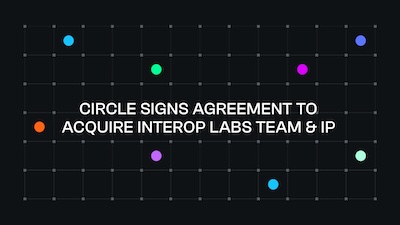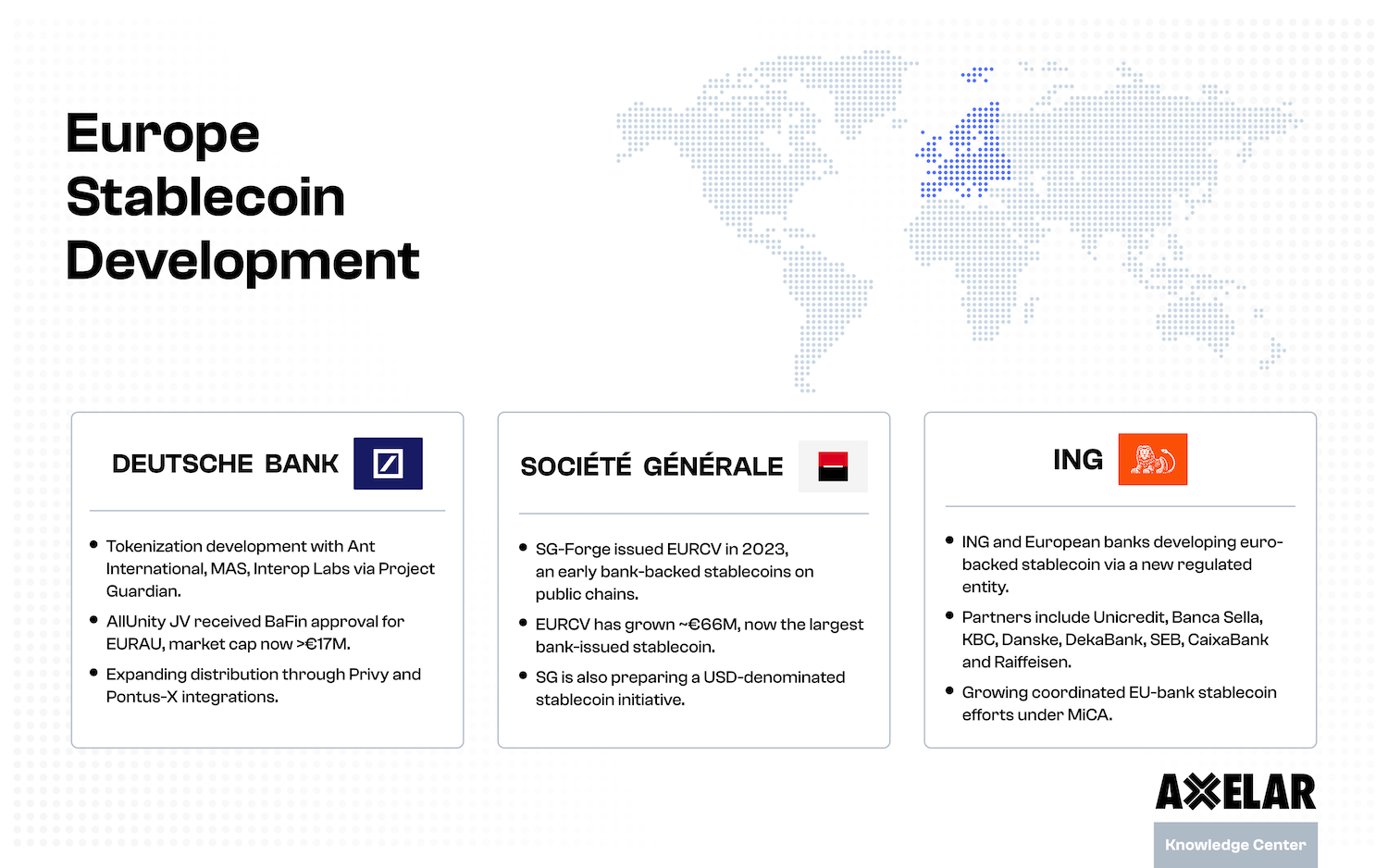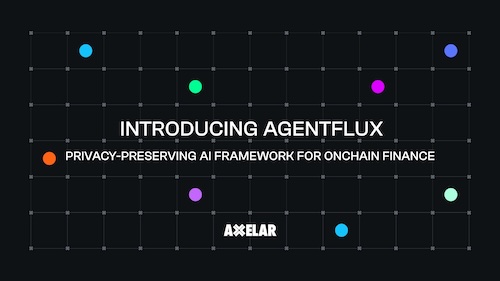Blockchain Interoperability: How to Achieve it Securely
Table of Contents


Blockchain interoperability must be a priority for all Web3 developers. Giving users a secure and simple way to transact across multiple blockchains is paramount for the future of Web3.
Growth in Web3 cannot come without an improvement in both developer and user experience. As more blockchains launch, the complexity for both developers and users increases. Developers are required to learn new languages and work in new environments. On the other hand, users need to manage multiple wallets and use risky bridges to interact with their assets across different chains. In order to reduce this complexity, blockchain interoperability must be a priority for all Web3 developers.
Giving users a secure and simple way to transact across multiple blockchains is important for the growth and scalability of Web3 applications and protocols. However, this can feel like an overwhelming task at times. As a developer, you face many different paths to interoperability in the blockchain ecosystem. Making sure you choose the right approach that fits your project takes time you don't have, and making the wrong decision can lead to redundant work hours and technical debt.
To help you make an informed decision, here’s an overview of why blockchain interoperability matters, some of the top blockchain interoperability solutions and their use cases.
Why blockchain interoperability matters
Blockchain interoperability compares to globalization because of its ability to open up the flow of assets that are locked in individual chains. Like countries, blockchains specialize and perform better than others in certain areas. Some blockchains may be ideal for minting new NFT collections, while others may provide extremely low transaction fees. For some applications, the place where a chain sits on the spectrum of providing scalability and security in a decentralized environment is very important.

Opening the flow between specialized blockchains does more than create opportunities for existing applications to grow. It creates opportunities for new applications and use cases to emerge. Examples of this abound throughout economic history, from the new categories of businesses that have emerged with globalization, to the rise of new internet business categories following the advent of overlay networks, which increased interoperability on the web.
Blockchain interoperability too, has come a long way, and infrastructure is emerging that can achieve interoperability.
Legacy approaches to blockchain interoperability
Instead of locking yourself into working on just one chain and its available contracts, cross-chain solutions open up the Web3 world for applications and their users. Many developers have recognized this, and as a result there are two well-worn paths to interoperability: multiple deployments and cross-chain bridges. Let’s dive into them and look at where each of these approaches falls short.
Multiple deployments – the hard way
Deploying multiple smart contracts to different blockchain networks that connect to your application is one strategy for interoperability. For example, you can build one application that has smart contracts on both Ethereum and Solana. This allows users to choose their preferred chain while using the application, fulfilling one goal of blockchain interoperability.
While users get interoperability and ease of use, from a developer's perspective, this "multicode" strategy doesn't come without costs. Maintaining entire copies of your application can cause issues with managing a universal application state, designing similar user experiences, and tracking updates across the different chains.
Even for projects that overcome these challenges, network effects beyond the developers' control can interfere with user experience. Often, multicode projects end up with one or more blockchain's users as second-class citizens with less liquidity than the leading chain.
Decentralized exchanges, for example, allow users to trade cryptocurrencies without intermediaries. Many DEXs have adopted the multicode strategy to achieve interoperability, with smart contracts deployed on multiple blockchains such as Ethereum, BNB Chain and Polygon. However, maintaining multiple copies of the DEX on different chains can lead to issues with managing a consistent application state and user experience. Moreover, multiple chains can also impact the liquidity of a DEX, with certain chains having more users and trading volume than others. This can result in users on less-popular chains having a poorer experience, with fewer trading opportunities and potentially higher fees.
Depending on the application, these disadvantages can be serious blockers. The multicode approach achieves interoperability in blockchains by making an application accessible across multiple chains but fails to provide any way for the application to communicate across multiple chains. Ultimately, managing code across multiple blockchains that have different architecture and functionalities is not scalable, even for the most experienced developers.
Cross-chain bridges – the risky way
Cross-chain bridges succeed where the multicode strategy fails, by bringing cross-chain communication directly to your application. Cross-chain bridges work by transferring tokens across chains. A user sends an amount to a specific address on the source blockchain, which is controlled by a bridging service. The service receives the tokens and then verifies the transaction. After verification, a transaction gets completed in the same amount on the target blockchain.

This is how popular cross-chain bridges such as the Binance Chain Bridge and Anyswap work. DeFi applications like staking and yield farming are popular use cases for cross-chain bridges. Users can track and transfer to different chains that will enable them to earn more funds.
Cross-chain bridges are far from perfect. In the last year alone, over $2 billion were reportedly stolen through crypto bridge exploits. There are several reasons that cross-chain bridges are more vulnerable to attacks than other blockchain interoperability approaches:
- Centralization - Most bridges are controlled by a central service and functions are executed either by a federation or a group that operates a multisignature wallet, or "multisig." This creates a fixed point of failure in the process and a fixed set of targets for attackers to exploit to drain funds. This is what happened with the Ronin Bridge, where hackers were able to exploit a backdoor to gain control over the majority of validators and stole nearly $600 million worth of ETH and USDC.
- Liquidity - For cross-chain bridges to work, the service must have available funds on both the source and destination chains. These bridges can hold a large amount of funds, which makes them attractive targets for attackers.
- Complexity - Cross-chain bridges deal with complex requests and must adapt to how different blockchains function. Therefore, each time a cross-chain bridge adds a new chain to support, the complexity handled by the bridge also increases. Where there is an increase in complexity, there is an increase in the opportunities and areas where attackers can target.
Interoperability solutions – the smart way
Blockchain interoperability solutions are networks that enable your applications to move any asset, and perform contract calls or messages to/from any chain supported by the network. These networks act as an interoperability layer to enable cross-chain communications for your application.
Each of these interoperability solutions comes with different levels of decentralization and security. Axelar is the first permissionless and decentralized solution that delivers the same level of decentralization as the blockchains it connects – by being a blockchain, itself. As a proof-of-stake network powered by the Tendermint Consensus Architecture, each node on the Axelar network runs the software of multiple connected chains.
These nodes monitor state, validate transactions and run permissionless protocols that route transactions from one connected chain to another. This uniform architecture provides a scalable and secure solution for cross-chain transactions and delivers blockchain interoperability with minimal added security assumptions.

As a blockchain, Axelar is also capable of executing functions that other cross-chain services cannot duplicate. For example, Axelar network can generate one-time deposit addresses, which decentralized projects can use to create user onramps that rival centralized exchanges for simplicity and ease of use. Axelar network also programmatically handles routing to all connected chains. This means that, when a new chain connects, it immediately gets the benefit of connection to the entire network, and compounding network effects are instantaneous. Here’s a video walkthrough that shows you how to get started building on the Axlear network.
Axelar provides General Message Passing (GMP), which supports developers to choose the ideal blockchain for the required use case and call any function on any connected chain, irrespective of the chain they are building on. In the context of GMP, “function” includes both smart contracts at the application layer (as on EVM chains) and logic built at the protocol layer (as on Cosmos chains).
GMP does this with complete decentralization, ensuring developers and users can experience cross-chain communication with complete security.
Wrapping up
Decisions about your application should come with a clear list of priorities. It is important to consider how secure a solution is, evaluate the features it delivers, determine whether it's scalable, and examine its approach to decentralization. Axelar overcomes the limitations of bridges and other current blockchain interoperability solutions and enables developers and platforms to offer a truly cross-chain experience to their users. With GMP, the possibilities are limitless, and it can power the next generation of dApps.
Axelar currently supports 35+ blockchains, including Avalanche, Binance, Ethereum, Fantom, Moonbeam, Polygon and Stargaze, with many more to be integrated soon.
Interested in using GMP and building with Axelar? Check out our docs on General Message Passing to know more, and reach out to us on Axelar Discord for any questions.


